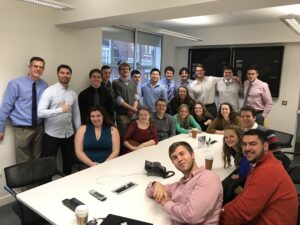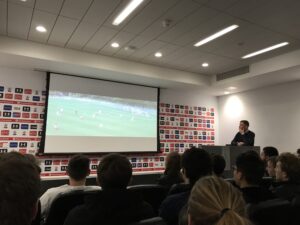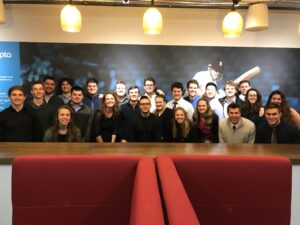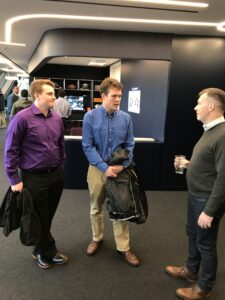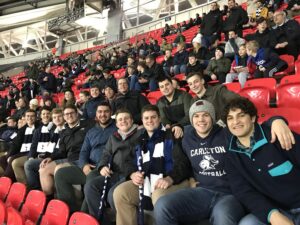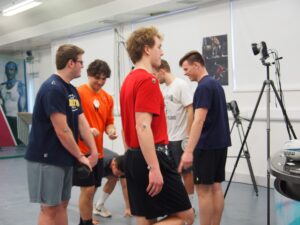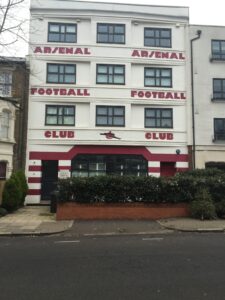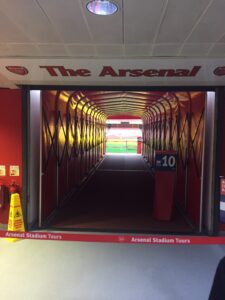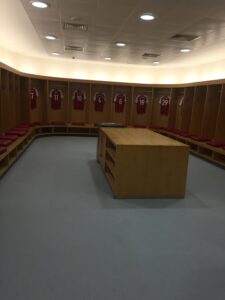Today we traveled to Nike’s UK Headquarters to learn about Nike’s role in UK sports. We met with Ralph Newbrook who plays a part in Nike’s relationship with the Premier League. We specifically works with the Tottenham Hotspurs and Manchester City.
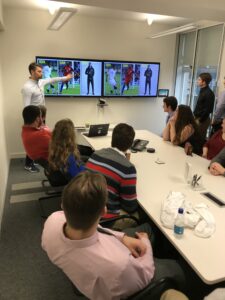
He aims to get the most out of the rights Nike has earned through contracts with these football teams in order to promote the brand and eventually, generate more business.
He does this by regulating things such as player appearances, photo shoots, and kit reveals using celebrities. He showed us a video in which AJ Tracey, a famous Grime artist (somewhat like rap music), performed at a concert and revealed the new Tottenham Hotspurs jersey halfway through to promote the team to all his fans. Another example was Paul Rodriguez, a skateboarder, who did a photoshoot in the new stadium to drum up interest. Ralph is in charge of deciding when, where, and how Nike uses these rights to create the most amount of business.
Ralph also described to us how Nike targets athletes and partners with them in order to help raise the athlete to the world stage and bring the Nike brand along with them.
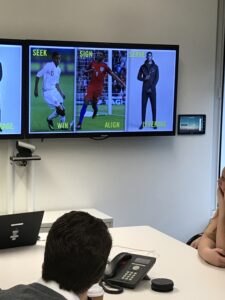
He used Marcus Rashford, a professional footballer playing for Manchester United and the English National Team, as an example of an athlete who they signed at a young age and brought the Nike brand to the international stage. Ralph also showed us how successful Nike has been at locking down star athletes, specifically in the English Premier League. He presented us statistics on the number of overall goals scored weekly in the league by all footballers, and over 60% of them were Nike sponsored athletes.
At the end of the very polished and engaging session, he asked for questions. We discussed how scandals have affected the brand, how rights transfer after managers have been sacked, and the possibility of football growing in the United States among other things. At the end of the discussion, Ralph gave our students the task of giving him one idea of how Nike can help tap into the largely untapped US market for football (or what we call soccer).
